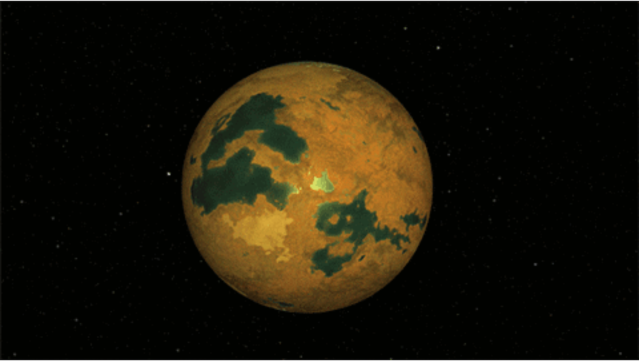


Astronomers have made an exciting discovery of a new exoplanet called TOI-6713.01, located approximately 66 light-years away from Earth. The planet, which is about 30 percent larger than Earth, has a scorching surface temperature of around 4220 degrees Fahrenheit. What makes this exoplanet particularly intriguing is its constant volcanic activity, earning it the nickname 'Io on steroids' due to its resemblance to Jupiter's moon Io. The planet's surface appears glowing and red-hot, similar to the volcanic eruptions on Io. The discovery was made possible through data gathered by NASA's Transiting Exoplanet Survey Satellite (TESS). Scientists propose that the volcanic activity on TOI-6713.01 may be driven by gravitational interactions with its parent body, similar to Io's relationship with Jupiter and its moons. This finding provides valuable insights into the dynamics of exoplanets and their geological processes. [426dddd4]
In another exoplanet discovery, astronomers have determined that the planet thought to orbit the star 40 Eridani A, which is the fictional home planet of Mr. Spock in the Star Trek universe, does not actually exist. The planet, known as Vulcan, was believed to be located in the star system that serves as the home of the iconic character Spock. However, precision measurements using a NASA-NSF instrument installed atop Kitt Peak in Arizona have definitively confirmed that the planet Vulcan is a work of science fiction. The NEID instrument at Kitt Peak National Observatory revealed that the supposed planet signal is actually the flickering of something on the star's surface, likely caused by convection and stellar surface features. This finding demonstrates the potential for making sharper observational distinctions between actual planets and surface activity on distant stars. [81f87dfb]
Meanwhile, NASA's Mars Odyssey Orbiter has captured an incredible image of Olympus Mons, the largest known volcano in the solar system. The image, taken on March 11, showcases the volcano's base, which sprawls across 373 miles. The Mars Odyssey Orbiter used the Thermal Emission Imaging System (THEMIS) to capture the image. By turning the spacecraft toward the horizon, a unique view of Olympus Mons was obtained. Jeffrey Plaut, Odyssey's project scientist, stated that the image not only provides a spectacular view but also offers unique scientific data. This image adds to our understanding of the geological features of Mars and the dynamics of volcanic activity on the planet. [dbc79e1a]